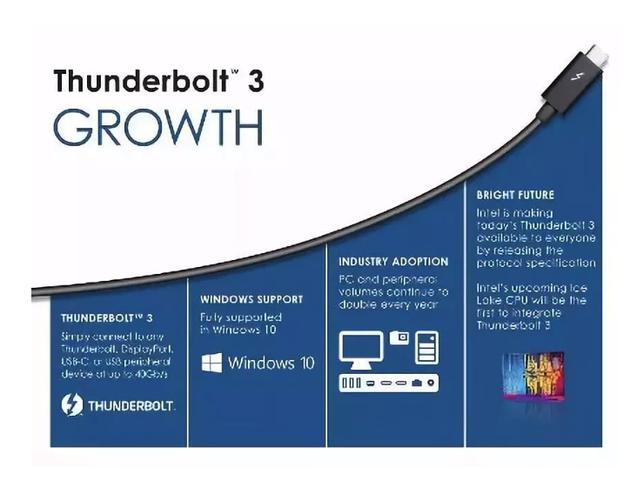Recently, the USB Promoter Group based on the USB 4 standard of the thunderbolt protocol, realizes the fusion of the underlying thunderbolt and USB protocols, and doubles the peak value of the USB 3.2 transmission rate.
At the same time, Intel officially announced that it will open the Thunderbolt protocol specification for USB promotion organizations, and manufacturers can build chips and devices compatible with thunderbolt standards for free.
So what changes can the USB 4 standard bring to our experience?
Double the peak transmission rate up to 40Gbps
Not long ago, the USB promotion organization just announced the latest USB naming convention. The original USB 3.0 and USB 3.1 naming will be canceled. All USB standards will be called USB 3.2, and USB 3.0 to USB 3.2 will be called USB 3.2 Gen 1. USB 3.2 Gen 2, USB 3.2 Gen 2×2. Now, the USB promotion organization has announced USB 4, which doubles the 20 Gbps transmission speed of USB 3.2 Gen 2×2 and achieves the same 40 Gbps as Thunderbolt 3.

The popularization speed of Thunderbolt 3 is very fast
According to Intel’s official data, the pace of adoption of Thunderbolt 3 is accelerating. Thunderbolt 3 has become popular in Windows 10 and macOS and Linux. The number of PCs using this port continues to double every year, and has reached the 10 million mark. For example, all Macs are equipped with Thunderbolt 3 ports. More than 400 PC designs have used thunderbolt 3 . The number of peripherals continues to double every year, and there are now more than 450 certified devices, including docking stations, displays, storage, and external graphics.

Comparison of the transmission data
So what are the benefits of USB 4? USB 4 is equivalent to popularizing Thunderbolt 3. After all, Intel has announced that it will be open to the public and will be exempt from licensing fees. Starting from 10nm Ice Lake, it will integrate support for Thunderbolt 3 at the processor level. Of course, USB 4 is much more open than Thunderbolt 3, because the use of Thunderbolt 3 must be strictly certified by Intel (to date only 463).
In addition, USB 4 provides up to 100W of power and can connect an external graphics card, two 4K displays or a single 5K display. In addition, unlike the USB 3.0/3.1/3.2 era, which uses the color interface for intergenerational differentiation, USB 4 does not have this requirement, and only Type-C is recommended.

Apple Mac comes standard with Type-C interface
Enhance compatibility based on Type-C interface products
On the whole, the existing USB Type-C has been merged with Thunder Power 3 to a certain extent. With Intel’s full liberalization of Thunderbolt technology, the two will be integrated from the bottom of the agreement and benefit each other: USB 4 can rely on Thunder 3 and double again, comparable to the speed of Thunderbolt 3 40 Gbps, and the power supply capacity of up to 100W; Thunder 3 can accelerate its popularity with USB.
Starting with USB 3.2, including the USB 4 under development, the traditional A and B interfaces are completely abandoned, and Type-C will become the only one, because the new ultra-high speed uses the dual-channel transmission of this new interface. Of course, its other great advantage is that it does not distinguish between the front and the back, and can be plugged and removed at will.
Intel officials said that the opening of Thunderbolt protocol specification has a major milestone, which will open the most simple and full-featured port to everyone to use, and the upcoming 10nm Ice Lake processor will also support Thunderbolt 3 natively. This can bring a win-win situation for Industry and consumers.
Smartavlink has incorporated Thunderbolt Fiber AOC into one of its future products to help customers meet the long-term needs of the market in the future.
